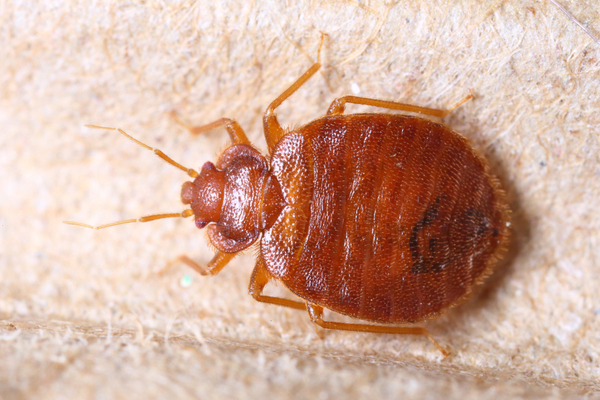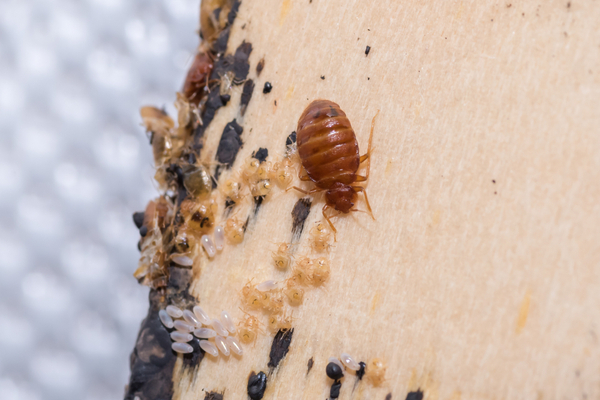One of the most common questions we get asked is: Where do bed bugs come from? Unfortunately, one of our customers found out the hard way. She didn’t know what bed bugs looked like or how to check for bed bugs until they were suddenly everywhere.
The truth is, we don’t always recognize the early signs of bed bugs. This story illustrates how quickly they can become a problem and how difficult it can be to get rid of bed bugs once they’ve infiltrated your world. Take heed!
What Causes Bed Bugs?
A dear friend of ours, Carol, tripped over a childproof gate at the bottom of her stairs and broke her ankle. She ended up in a large hospital for three days. During her stay, Carol was put in a patient room with a sofa and a stuffed, white chair for visitors.
On the first day of Carol’s stay, her whole family visited her: her husband, her son, her two daughters, daughter and sons-in-law and multiple grandchildren. Several family members took turns sitting in the white chair. One of her sons-in-law thought he felt something biting him and mentioned at the nurse’s station. The nurse did a quick inspection but didn’t see anything.
That afternoon, Carol’s friends from church showed up with the usual assortment of balloons and flowers. One of the church deacons sat in the white chair but didn’t notice anything out of the ordinary.
The next morning, the gardening club ladies showed up. The woman in the white chair noticed something biting them and mentioned this to Carol. Carol, remembering her son-in-law complaining the night before, called the nurse.
A new nurse inspected the chair and saw a small dark red insect along the seam. This nurse had been trained in the identification of bed bugs and in the hospital’s bed bug action plan. He immediately reported the sighting and began the process to correct the situation.
Carol and her clan were moved to a different room. The room with the white chair was quarantined and treated for bed bugs.
How Bed Bugs Spread
The story is far from over. During the treatment, 20 adults and a handful bed bug babies emerged from the folds of the white chair. At least 4 people had sat directly in the white chair which also probably contained microscopic beg bug eggs.
-The son-in-law had left to go back to work at his financial planning firm, a large office building downtown, with 11 floors.
-An adult granddaughter took the train back to Chicago where she attends college. She lives in a dorm on campus with 3 other girls.
-Carol’s other grandchildren attend daycare and middle school.
-The deacon didn’t go directly home, he visited another parishioner in the same hospital.
-The gardening club ladies? After visiting with Carol, some of them returned home, while others went out to lunch and then window shopping at the mall.

How to Tell if You Have Bed Bugs
The long and short of this story: getting bed bugs is as easy as catching a cold. Bed bugs are really a communicable disease and are treated so by public health departments.
Because of bed bugs’ size, you won’t always see them. If that first nurse had identified the source of the son-in-law’s bite, the spread could have been stopped sooner.
Know the signs of bed bugs. If you suspect that you have bed bugs in your home or workplace, contact Griffin Pest Solutions today. The sooner you address the problem, the faster we can stop the spread!













